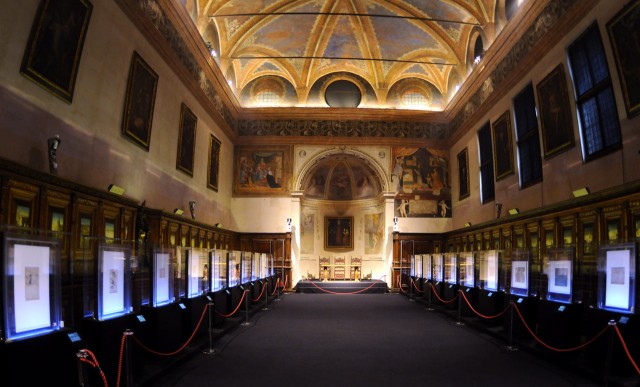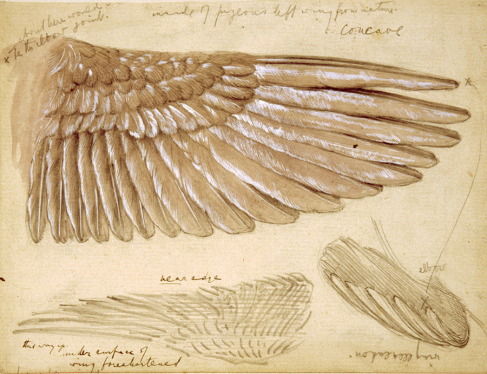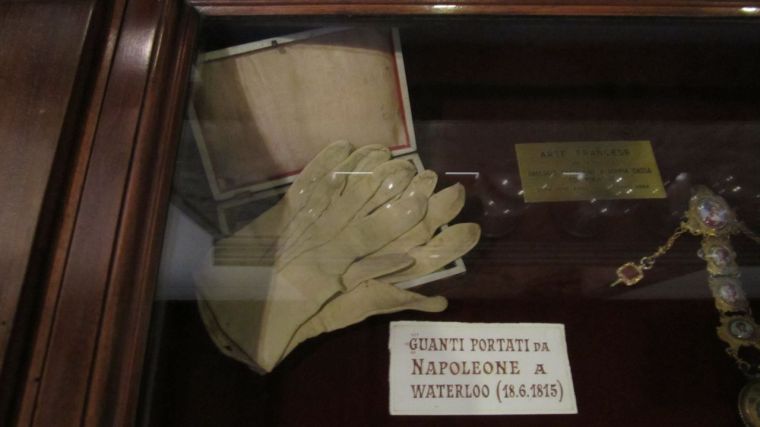I’ve been trying to settle into an ancient history paper this weekend, but my brain keeps taking off on me. Across my living room, the Mona Lisa, the Vitruvian Man and The Lady of the Dishevelled Hair are all vying for my attention. Seems I’m on a bit of a Leonardo kick. Over the past couple years, I’ve been taking art history courses spanning from prehistory to the twenty-first century. I’ve been running back and forth along that timeline ever since. Every time I think ‘the Renaissance is definitely my fave!’, I get swept up in compelling stories of yet another century, another country or continent. Maybe there’s no such thing as settling on a favourite point of history.
A few days ago I returned to the Renaissance and watched a fascinating dramatized documentary, ‘Inside the Mind of Leonardo.’ What a mind. Painter of the immortal Mona Lisa and The Last Supper, inventor, architect, physicist, geologist, civil and military engineer, botanist, anatomist, map maker, musician. I’m awestruck by the genius of the original Renaissance man. Wouldn’t it be incredible to poke around in the diary of someone like that?
Actually, if you go to the Pinocoteca Ambrosiano and the Bramante Sacristy in Milan, you can. That’s where a portion of the Codex Atlanticus, Leonardo’s diary is housed. Of course, you’d have to learn to read Italian backwards and probably get some sort of security clearance to see it all. But part of the collection of writings and drawings are on public display. While you’re there, you can also see the white gloves that Napoleon wore at the Battle of Waterloo. History is such a magnificent goose chase, isn’t it? From ancient Egypt to the Renaissance to the Napoleonic Wars in just three paragraphs.

But back to Leonardo. How do you even begin to consider his artistic, scientific, philosophical and engineering innovations without filling a library? Or at the very least, writing a paper? I won’t subject you to that, but can I ramble a bit about wings? Leonardo’s wings specifically. Until last week, I didn’t know that twenty-first century flight traces its beginnings to fifteenth century Europe. I missed acquiring this apparently common piece of knowledge as a kid, which makes it all the more exciting to discover now.
Leonardo was perhaps the first European to envision the aerodynamics of modern flight. It became a lifelong preoccupation, though his efforts wouldn’t be realized for another four centuries. As a youth in Florence, nature was the foundation for Leonardo’s ideas, including flight. He examined birds, bats and insects; analyzing and sketching their internal anatomy.

I was briefly put off, imagining young Leonardo killing and dissecting living things in his experimentation. But this apparently isn’t true. Historians seem to agree on Leonardo’s refusal to consume animals and his recognition of the cruelty of mistreating them. This wasn’t at all common practice at the time. Here’s some interesting info on Leonardo’s vegetarianism. Strange, I’m considering this myself now also, not something I was expecting to address via art history.
Fifteenth century Europe didn’t look favourably on Leonardo’s investigations into flight. The church viewed much of science as magic, a pursuit that could get you hung or beheaded for heresy. Galileo, Leonardo’s contemporary, spent the last ten years of his life on house arrest for his views on heliocentrism, a view Leonardo supported also. But I’m off on another chase into the Copernican Revolution. How can anyone study history without getting hopelessly side tracked?
My point in this meandering reflection, is that advancement of flight wasn’t based on the wings of birds, but rather on the wings of bats. The above left illustration is a bat wing, which later was implemented in the design of the glider, which eventually led to modern flight. I spent quite a while perusing this here. I’m not sure why this all strikes me as so significant, other than that I hadn’t considered it before. I didn’t know last January when I traveled to Europe, that I was figuratively flying on Leonardo’s wings.
As I was saying, art history is taking me to many uncharted places. I’ve lost roughly thirty-six hours to this pleasant diversion and my ancient history paper is still waiting. But before I try to focus on that, let me leave you with this picture of Napoleon’s white gloves. I’m sure before long, they’ll be wrapping their white fingertips around my shifting attentions also.








Exploring history is wonderful. 🙂
Yes, yes, yes. 😉
It’s hard to fix on a set period of history as things are in constant flux. Frances Bacon is said to be the last man who knew everything there was to be known at the time, but I bet he didn’t know the best way to bake a cake or shoe a horse. I concentrate on the 18th century because it’s when the world really tipped on its axis and most people seem to have been quite mad, often in a fascinating way. But most of what I get from history is how people adapted to adversity. It gives me hope in our future as we enter what seem to be pretty grim times.
How interesting about Francis Bacon! I didn’t know that. Yes, I see what you mean about the 18th century and love your description of it’s people!
Reblogged this on victormiguelvelasquez.
Great post Lori……thank you!
Thanks!
No we cannot study history without being side tracked, but that is a huge part of the fun.
So true!